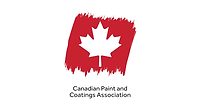The biggest regulatory challenge for the paint and coatings industry in Canada over the past 10 years has been the federal government’s Chemicals Management Plan (CMP). It reviewed 43,000 substances at the outset, with 2,300 of these in the first two phases of the CMP being considered priorities for assessment in a further breakdown for those substances “of concern.” Phase 3 of the CMP (CMP-3), which has just begun, will assess 1,500 substances over the next five years, 30 percent of which are used in the paint and coatings industry.
CMP has been a constant churn of consultation and a massive exchange of information that at times is caught up in jargon, advocacy for or against a certain chemical substance by various nongovernmental organizations (NGO), extensive industry data collection efforts, industry-government meetings, formal and informal submissions, and more. While the subjects and risk assessment processes are indeed complex, the objective is straightforward. While well intentioned, many NGOs continue to argue for a hazard-based approach over the one used under the CMP, which is based on risk. They essentially contend that a toxic designation should be more prevalent than it has been to date, regardless of the veracity of the science, with more banned substances and stiffer regulations.
Companies have repeatedly maintained that the amount of work needed to ensure the process of assessing substances of concern is difficult, time consuming and costly. That is completely understandable and, though challenging, efforts continue to try and make that process as painless as possible. CPCA’s regulatory work focuses on making the process fair and transparent, one that leads to the best outcomes for industry. For its part, industry aims to ensure that key substances used to sustain the performance of in-demand product lines, numbering in the thousands in some cases, are not designated as toxic or banned completely due to lack of information for proper risk-based assessments.
Understandably, the government’s objective is to ensure industry effectively manages the potential risks of the chemicals used with respect to human health and the environment. This often includes regulations, pollution prevention plans, codes of practice and other control measures. Industry must insist that decisions are based on sound science, which is not always assured if such information is not provided or does not exist. Any decisions taken to manage chemical risk, with or without a nontoxic designation, must not limit a company’s ability to compete in a highly competitive global economy, recognizing the fact that chemicals are all around us: in the home, in our vehicles, at work, on a plane, crossing a bridge, and the list is long. Many of these chemicals in a dozen coating segments “protect” more than “harm” us, which does not mean we need not manage risk, but it means we must seek to understand the relative merits of proper end-use vis-à-vis the management of those risks. To do otherwise is irresponsible, and to date the coatings industry has effectively responded to the challenge in Canada.
Coatings manufacturers or importers of any of the 1,550 substances identified under CMP-3 can benefit from early engagement with federal officials. The third and final phase will once again require industry’s undivided attention. Industry was vigilant and worked well via CPCA’s technical working groups in the first two phases, with very few bans of substances materializing. When there were risk management measures, such as regulations, they were fair and reasonable. Industry must remain vigilant in this third phase in order to get similar results.
It may sound counterintuitive to help government early in the assessment process, but it is beneficial from a business operation’s perspective. It usually means better outcomes for industry, as there will be more time to provide proper data, rather than wait until the last minute in a scramble for data to save the day. Failure to submit the data required for a proper assessment of substances will encourage the government to take the position that industry cannot provide it or does not understand the potential risk. As a result, industry could end up with decisions that are detrimental to its business in the long run.
As a stakeholder, there are multiple benefits to identifying chemical use early in the risk assessment process with respect to substances being targeted for assessment. Companies, and industry generally, have an increased ability to influence the assessment approach taken by government. For instance, the government has indicated that it is moving away from the requirement for “mandatory” surveys, which trigger company-specific compliance activities that are very time consuming. Instead, it will maximize opportunities to engage with industry through sector approaches via associations and joint industry submissions, which is one of CPCA’s strengths. Industry must ensure government assessors obtain the information needed for effective assessment.
By reviewing the identified list of substances, member companies in the coatings industry can begin to develop an early strategy for engagement, whether as a direct company stakeholder or by working through CPCA. In some cases it can be both. In this way, the sector will gain a better understanding of the extent of the information required and can focus resources more effectively.
While still under review, there are roughly 405 substances of the 1,550 under review in CMP-3, including a large number for adhesives and sealants, representing close to 30 percent of the total. This is a substantial number of substances to be assessed by the federal government for a possible ban or a risk management measure. Industry must be fully engaged over the next five years as governments in Canada and elsewhere escalate their assessment of substances used in thousands of coatings formulations.
Recently passed legislation in the United States to reform toxics control legislation will also be assessing chemicals in commerce, albeit a smaller number at the outset. As well, there are remaining GHS challenges vis-à-vis the United States with respect to concentration ranges and CBI claims made by industry and how they are handled cross-border. Industry must transition to full GHS labels by June of 2017, and companies that distribute chemicals must do so by 2018. There is still work to be done to ensure greater alignment between the two countries.
Decisions that are not aligned with other jurisdictions, such as the United States, can lead to negative decisions by the federal government with respect to substances used in thousands of products sold in Canada. The following negative impacts can result due to nonalignment:
- Trade disruptions and difficulties in the management of stocks for North American trade;
- Abandonment of products with high penetration in the Canadian marketplace;
- Reformulations required for products with the use of alternatives that are not always cost effective or available;
- Extensive testing, re-labelling and special precautions with respect to transportation of goods and other supply chain issues;
- Unique Canadian restrictions of use and/or misalignment with U.S. and international regulatory measures for substances;
- Potentially creating a negative image for industry generally with respect to substances used in product formulations.
The Canadian coatings industry wants none of these negative impacts as they can disrupt a company’s business plans.
The next round of federal VOC regulations in Canada is also planned for completion by 2020, which means it will start very soon as there will be several years of consultation before the regulatory process is completed. The critical work must begin now. These regulations will target all chemicals, and given that the level of VOC limits have already been greatly reduced for architectural and automotive coatings per the regulations of 2009, the focus will also likely include industrial coatings. The coatings industry must focus on and prioritize the substances targeted in each segment of the sector to determine the best way forward in negotiating new VOC limits in each category. This will be a challenge.
Both in the Ontario provincial legislature, a province representing 40 percent of the industry, and the Parliament in Ottawa, there are now two very activist governments focused on the environmental agenda. This includes a Parliamentary Committee on the Environment and Sustainable Development reviewing chemicals management with a view to strengthening the regulations under the Canadian Environmental Protection Act. Already the NGOs appearing before that Committee have advocated for amendments that: could increase the number of banned substances; force industry to seek out costly alternatives before government considers approving new and existing substances, insisting that if companies have “no data” they will have “no market”; consider using the more costly European REACH approaches for chemical assessment; and consider other proposals for substantial change. Industry continues to argue that the current CMP process has been widely viewed as a success and must remain intact as evidenced by the fact that several other countries are beginning to emulate Canada’s approach on chemicals management.
Industry must get out ahead of the naysayers and advocate for a balanced approach that takes into account all three pillars of sustainability. The economic pillar is slipping off the radar these days. If we as a country do not get the right balance, industry will suffer the consequences of stiffer amendments to federal environmental legislation, which may only marginally reduce risk, if at all. Time will tell whether what we do today positively impacts the results for chemicals management in Canada in the days ahead, or more specifically, early in 2017 when the current Standing Committee report is to be tabled in Parliament. That will not be the end of it, but it will tell us how much work there will be to do if the recommendations are against the current chemicals management process







Report Abusive Comment